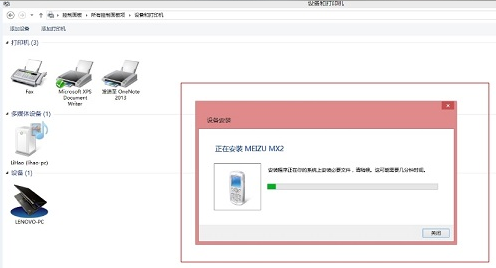建设,加载应用程序时,抛出“multipleDefine”,给这个错误后,我的道场应用程序中断:
错误{SRC: “dojoLoader” 信息:对象}
消息:multipleDefine
信息:对象{PID: “道场”,中期 “道场/ NLS / dojo_en-US”,包:对象,网址: “道场/ NLS / dojo_en-us.js”,执行:5 ...}
这是我的个人资料:
var profile = {
// `basePath` is relative to the directory containing this profile file; in this case, it is being set to the
// src/ directory, which is the same place as the `baseUrl` directory in the loader configuration. (If you change
// this, you will also need to update run.js.)
basePath: '../src/',
// This is the directory within the release directory where built packages will be placed. The release directory
// itself is defined by `build.sh`. You should probably not use this; it is a legacy option dating back to Dojo
// 0.4.
// If you do use this, you will need to update build.sh, too.
// releaseName: '',
// Builds a new release.
action: 'release',
// Strips all comments and whitespace from CSS files and inlines @imports where possible.
//cssOptimize: 'comments',
// Excludes tests, demos, and original template files from being included in the built version.
mini: true,
// Uses Closure Compiler as the JavaScript minifier. This can also be set to "shrinksafe" to use ShrinkSafe,
// though ShrinkSafe is deprecated and not recommended.
// This option defaults to "" (no compression) if not provided.
optimize: '',
// We're building layers, so we need to set the minifier to use for those, too.
// This defaults to "shrinksafe" if not provided.
//layerOptimize: 'closure',
layerOptimize: '',
// Strips all calls to console functions within the code. You can also set this to "warn" to strip everything
// but console.error, and any other truthy value to strip everything but console.warn and console.error.
// This defaults to "normal" (strip all but warn and error) if not provided.
stripConsole: 'all',
// The default selector engine is not included by default in a dojo.js build in order to make mobile builds
// smaller. We add it back here to avoid that extra HTTP request. There is also a "lite" selector available; if
// you use that, you will need to set the `selectorEngine` property in `app/run.js`, too. (The "lite" engine is
// only suitable if you are not supporting IE7 and earlier.)
selectorEngine: 'acme',
//localeList:"en-gb,en-us,de-de,es-es,fr-fr,it-it,pt-br,ko-kr,zh-tw,zh-cn,ja-jp",
// Builds can be split into multiple different JavaScript files called "layers". This allows applications to
// defer loading large sections of code until they are actually required while still allowing multiple modules to
// be compiled into a single file.
layers: {
// This is the main loader module. It is a little special because it is treated like an AMD module even though
// it is actually just plain JavaScript. There is some extra magic in the build system specifically for this
// module ID.
'dojo/dojo': {
// In addition to the loader `dojo/dojo` and the loader configuration file `app/run`, we are also including
// the main application `app/main` and the `dojo/i18n` and `dojo/domReady` modules because, while they are
// all conditional dependencies in `app/main`, we do not want to have to make extra HTTP requests for such
// tiny files.
include: [ 'dojo/i18n', 'dojo/domReady', 'app/main', 'app/run' ],
// By default, the build system will try to include `dojo/main` in the built `dojo/dojo` layer, which adds
// a bunch of stuff we do not want or need. We want the initial script load to be as small and quick to
// load as possible, so we configure it as a custom, bootable base.
boot: true,
customBase: true
},
},
// Providing hints to the build system allows code to be conditionally removed on a more granular level than
// simple module dependencies can allow. This is especially useful for creating tiny mobile builds.
// Keep in mind that dead code removal only happens in minifiers that support it! Currently, only Closure Compiler
// to the Dojo build system with dead code removal.
// A documented list of has-flags in use within the toolkit can be found at
// <http://dojotoolkit.org/reference-guide/dojo/has.html>.
staticHasFeatures: {
// The trace & log APIs are used for debugging the loader, so we do not need them in the build.
'dojo-trace-api': 0,
'dojo-log-api': 0,
// This causes normally private loader data to be exposed for debugging. In a release build, we do not need
// that either.
'dojo-publish-privates': 0,
// This application is pure AMD, so get rid of the legacy loader.
'dojo-sync-loader': 0,
// `dojo-xhr-factory` relies on `dojo-sync-loader`, which we have removed.
'dojo-xhr-factory': 0,
// We are not loading tests in production, so we can get rid of some test sniffing code.
'dojo-test-sniff': 0
}
}
这里是内部SRC中的index.html /
注:
build.sh负责部署到生产时删除“isDebug”标志。 如果你在所有修改这个标志,你会打破建立!
<script data-dojo-config="async: 1, tlmSiblingOfDojo: 0, locale:'en_US', isDebug: 1" src="dojo/dojo.js"></script>
<!-- Load the loader configuration script. Note that this module ID is hard-coded in build.sh in order to provide
an optimised build that loads as few as one script for the entire application. If you change the name or
location of this module, you will need to update build.sh too. -->
<script src="app/run.js"></script>
这是在蒸馏水生成的index.html /
<!DOCTYPE html>
<html>
<head>
<meta charset="utf-8">
<link rel="stylesheet" href="app/resources/app.css">
</head>
<body class="claro">
<script data-dojo-config=
"async: 1, tlmSiblingOfDojo: 0, locale:'en_US', deps:['app/run']"
src="dojo/dojo.js"></script>
</body>
</html>
我检查,以确保道场/ NLS / dojo_en-us.js存在,它是好的。 我被困在这一点上,没有线索!
任何有助于解决这个问题表示赞赏。





